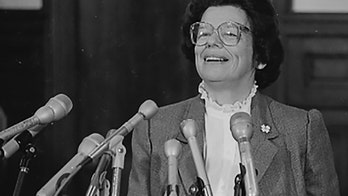
Unaccounted graves found at reform school in Florida (Reuters)
A Florida lawmaker wants the Justice Department to help investigate renewed allegations of state-sanctioned abuse and a generations-long criminal cover-up at a notorious reform school for boys.
Stories of torture at the Arthur G. Dozier School for Boys date back to the 1900s when students were kept in shackles and beaten with a leather strap. Further investigations have shed light on mysterious deaths and abuse tied to the institution in nearly every decade of its existence.
"The reform school may yield some ugly reminders about our past but we absolutely must get to the bottom of this," Sen. Bill Nelson, D-Fla., said.
Earlier this week, scientists and researchers at the University of South Florida in Tampa released a report showing at least 50 graves were found on the compound -- 19 more than originally reported by state officials. The researchers used ground-penetrating radar and oil samples to uncover the previously undiscovered graves. Officials had already determined that during the history of the school's existence, at least 98 boys between the ages of 6 and 18, as well as two adult staff members, died at the now-shuttered school.
Most of the deaths have been attributed to a fire in 1914 as well as a flu outbreak in the early 20th century, but questions remain about the circumstances of some of the fatalities. Further, allegations of abuse at the school have been well-documented.
On Wednesday, Nelson asked Attorney General Eric Holder to provide assistance to a team of scientists as they continue to search school grounds. The Justice Department has not said if it will help.
In October, Lakeland, Fla, resident Glen Varnadoe contacted Nelson's office for help. He said his father and uncle had been sent to the reform school years ago and that his uncle died under mysterious circumstances 35 days after he arrived.
"It's time to bring Thomas home," Varnadoe wrote in a letter to Nelson.
Former students have over the years recounted personal tales of abuse at the school. Roger Dean Kiser, who was sent there during the 1950s, called the facility a "concentration camp for little boys" in his memoir "The White House Boys -- an American Tragedy."
There may could be more victims hidden in the campus cemetery, said Erin Kimmerle, an assistant professor of anthropology at USF.
"Many questions persist about who is buried at the school and the circumstances surrounding their deaths," she told FoxNews.com.
USF researchers want to return to the site in January to continue their investigation. Overgrowth stalled earlier efforts to test the entire area.
The full scale of the abuse at Dozier is still unknown.
Several men who were sent to the reform school as teenagers in the 1960s have spoken out about the brutality they experienced, which included being whipped until they bled in a building called "The White House."
Four years ago, Florida's then-Gov. Charlie Crist ordered an investigation into allegations made by these men, all of whom attended the school in the 1960s. The Florida Department of Law Enforcement issued a report that said it found 31 boys buried in the cemetery. The report stated that most of the boys had died either in the 1914 fire or from the flu pandemic. The case was closed due to a lack of evidence. No charges were filed.




